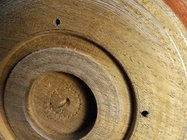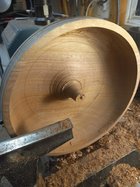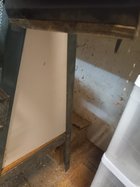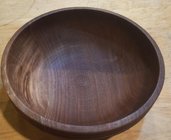@Brian Gustin I used to have that lathe. One of the advantages of a pivot HS is the piece can be rotated away from you, slide the banjo behind the work, rotate the HS back in - same thing to get the banjo out to the rim/front. Or, rotate the work to outboard. Definitely takes some fiddling with the banjo and tool rests turning outboard on that lathe. I did turn a few 14-15” bowls and platters with it. My Nova Galaxi is much easier and more fun to turn on.
Yeah, I got mine used , rotating headstock was already beat up and I think bent (I suspect the original owner got a HUGE catch trying to turn a bowl with one of those el-cheapo SRG's - he gave me the gouge set he had along with the lathe (One SRG and a couple continental style gouges) were all bent in multiple places (along the flute, not just at the tang - SRG was almost L-shaped - I literally straightened it back out in my bench vise, and used it a few times on spindles) and the headstock never lined up right with tailstock - I tore it down and cleaned up, straightened and re-tightened, but I also had to shim the headstock on one corner to get it to sit flat and line up with tailstock. I can't move headstock any longer, if I do, It'll mean another couple hours just getting things lined back up

I also finally found a Laguna banjo on here that I adapted to replace that awful, awful HF banjo....
But, I ended up with a working lathe that does allow me to produce halfway decent results (despite still having some runout on the spindle, creating vibration that is difficult but not impossible to work around) - The other thing is that motor and reeves drive, are barely strong enough to spin up a 12 inch diameter x 4 inch thick chunk of maple (I stalled the motor a few times, and it got hot enough you could smell it), so I'd say it is seriously underpowered if you are gonna do any large green wood turning, even without pivoting headstock.
However, in my view, when I do get that new Jet 1840 (or at least 1640) I have my eye on (which is best I think I'll be able to afford unless I hit the lottery) , The practice and experience turning on that HF lathe will probably make for some much nicer work coming off the new lathe..





